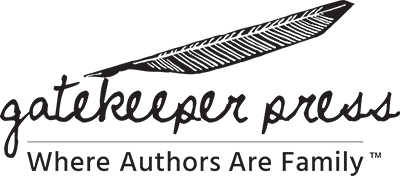Your masterpiece is finally completed! After pouring your heart and soul into your first foray into authorship, you are ready to embark on the self-publishing journey.
At the behest of some sage wisdom received, you have hired a professional to tackle the cover design for your book. And, because it has turned out utterly spectacular, you want to do this cover proud. So, now the big question that looms before you: paperback vs. hardcover?
Most of us have been groomed over the years to consider a hardcover book to be superior to the “lowly” paperback. In fact, publishers will typically launch a title in hardcover with a dust jacket amid all sorts of fanfare announcing the fresh-off-the-press next bestseller. Savvy readers understood that by playing the waiting game, usually up to a year, the paperback version would be released for a fraction of the original price.
But times are a-changin’. Hardcover books are still all that for certain book genres, namely textbooks, children’s books, first-edition fiction, and coffee table books — and most of these will never appear in paperback form. But, regardless, in recent years, a clear preference for paperback has taken some of the wind out of the hardcover’s sails — and sales.
Self-publishing services offer a gamut of cover options, making the decision of which cover to select for your project a head-scratching exercise in calculating profit, determining the projected use of your book, and what cover type is standard for your particular genre.
To navigate all this, let’s first consider the primary differences between hardcover and paper options.
Pros and Cons of Paperback vs. Hardcover
Researching paperback vs. hardcover preferences can leave you cross-eyed. Surprisingly, some sources claim that paperback is the pricier option, which defies logic.
I mean, why do people think paperback is more expensive than hardcover when retail prices for each clearly tell the real story. The hardcover and paperback price differences reflect the publishing costs. So, go ahead and toss that out, because in the real world, hardcover publishing is a higher-priced endeavor, resulting in a higher price tag at the retail level.
But cost isn’t the only guiding factor when deciding which cover option to choose for your book. There are other reasons why someone might have a preference when purchasing a book, so if you are considering the hardcover vs. paperback options it may all come down to such nuances as these:
- Hardcover books just feel more substantial, like they are more valuable.
- Hardcover books are more durable.
- Your personal library consists of hardcover books, so you seek those out.
- A hardcover book seems more legit, more authoritative.
- A paperback book is easier to tote around.
- A paperback book is cheaper, so people can buy two of them for the price of one hardcover book in many cases.
- A paperback book feels more intimate –– you can cuddle up with one.
- Because paperback books are smaller, you can fit more books in your bookcase.
Why is paperback cheaper than hardcover?
The cost difference between the paperback and hardcover options is due to the lower cost of materials, plus the ability to mass-produce a paperback book. Hardcovers involve more manual labor to produce, in addition to higher material costs and more complicated printing processes.
But this is just one example of the wide array of opinions you will have to sift through as you do your homework about self-publishing at large, and selecting a cover in particular.
Differences Between Paperback and Hardcover
Gathered here are the most commonly cited differences between hardcover and paperback:
Paperback Books
A paperback or softcover book uses a heavy cardstock, either glossy or matte, to protect the interior content. Some paperback books feature flaps to contain the book details and author bio. Additionally, the extra cover space provides for artwork and graphics.
We all love to cuddle up with a great paperback, don’t we? And for good reason:
Pros:
- Paperback editions are lightweight, more portable, and have lower shipping costs
- They are pliable, making them easy to bend and pack into tight spaces
- Paperbacks feel more consumable, and we are inspired to plow through them
- Paperbacks cost at least half as much as hardcover books to publish
- People who like to annotate their books feel less guilty marking up mass-market paperbacks than hardcovers
Then again, the paperback does have a few drawbacks:
Cons:
- Paperback covers can become tired looking, with curling corners and nicks
- Paperbacks don’t carry the status of hardcover books
- There is more competition in the paperback category
Hardcover Books
Self-publishing hardcover books can be accomplished using a couple of different methods.
One method uses 2.5mm-3.5mm thick cardboard over which a coated paper is wrapped that contains the cover art design. The other is a clothbound, or case bound, cover in which a durable cloth is applied to the cardboard, and the cover art is applied directly to the cloth. Either of these versions can sport a dust jacket, which features the glossy cover art and interior flaps.
Who doesn’t love the look of a classy hardbound book? Here’s why:
Pros:
- Hardback books have a premium look and feel
- Hardcovers are much more durable
- With a dust jacket, hardcovers are like getting two covers in one
- Books in hardcover command a higher margin
- Collectors prefer the hardcover version of a book
On the other hand, there are some downsides to printing hardcover books:
Cons:
- Hardcovers are pricey, costing upwards of double the price of a paperback cover
- Hardcover books are heavier and less easily carried around
- Hardcover books have higher shipping costs
Should I Print a Hardcover or Paperback Book?
When approaching the point of your book project when big decisions about book design must be made, the question of hardcover vs. paperback is one of the biggies. Why? Because you must consider several factors, including cost differences, profitability, genre, and aesthetics before pulling the trigger. Some considerations include:
- Genre. The genre of your book can dictate whether you select hardcover vs. paperback. For instance, cookbooks are best published as hardcover books so they will hold up well under the demands of the kitchen. Coffee table books are much more striking in hardcover form, and biographies are more commanding in their appeal when published in hardcover form. On the other hand, a romance novel is perfectly suited to paperback.
- Book cover art. Your amazing book cover art may not have the same visual impact in paperback form. While a simply drawn illustrated book cover translates well to a paperback cover, it may seem oddly weak in hardcover form. As well, a dramatic cover design for a thriller is more captivating in hardcover form with a high gloss dust jacket than on the more muted paperback cover.
- Costs. It’s easy for writers to get tangled up with the question of dollars and cents when it comes to calculating costs and royalties of a paperback book vs. hardcover. As a rule, a 250-page 6×9 paperback will cost about $4.00 to print. With a $14.95 retail list price, the royalty is about $5.00 per unit sold. A 250-page 6×9 hardbound book will have costs that range from $9-$13 based on whether there is a dust jacket and the type of binding used. The royalty paid for the hardcover based on those details could range from $4-$6.50 per unit sold.
Anguishing over the profit margin difference between a paperback and hardcover needn’t be such a harrowing step of the self-publishing process. Many authors solve this dilemma by offering their book in all three formats, paperback, hardcover, and eBook.
Not Sure If Paperback, Hardcover, or Even eBook is Best?
So, which option is better in the great paperback vs. hardcover debate?
Clearly, the decision about which cover to select for your amazing new book is not all that clear. This is where some valuable publishing expertise can be worth its weight in gold.
Partnering with Gatekeeper Press for your book project immediately takes the stress out of this important publishing endeavor.
We will help you make the best choice for not only your cover but for all the decisions that factor into creating a high-quality final product. Additionally, the team at Gatekeeper Press can help you self-publish hardcover or paperback with their expert publishing services, as well as eBook publishing services.
Visit Gatekeeper Press today for their full spectrum of publishing services and contact us to get started.


